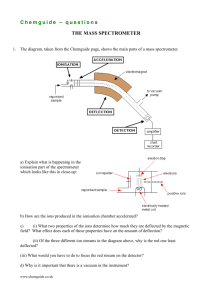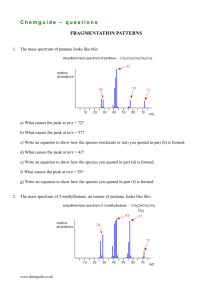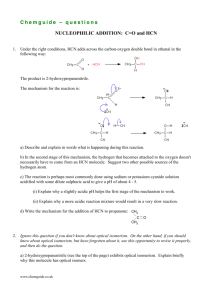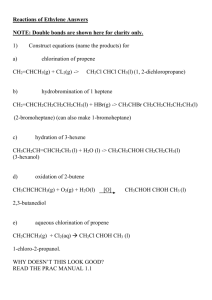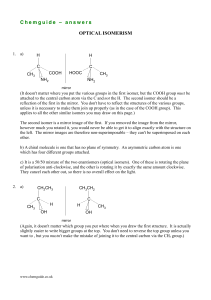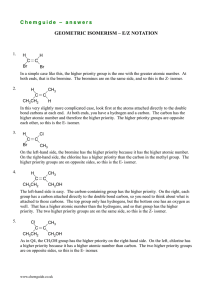Chemguide – answers DRAWING ORGANIC STRUCTURES
advertisement
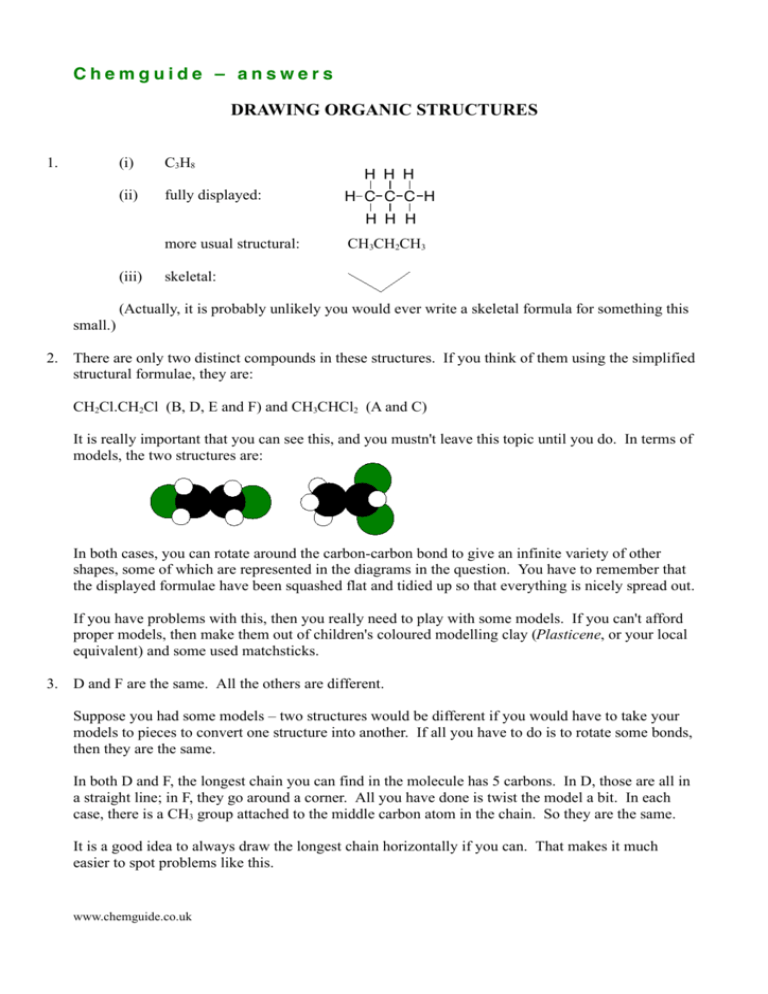
Chemguide – answers DRAWING ORGANIC STRUCTURES 1. (i) C3H8 (ii) fully displayed: H H H H C C C H H H H more usual structural: (iii) CH3CH2CH3 skeletal: (Actually, it is probably unlikely you would ever write a skeletal formula for something this small.) 2. There are only two distinct compounds in these structures. If you think of them using the simplified structural formulae, they are: CH2Cl.CH2Cl (B, D, E and F) and CH3CHCl2 (A and C) It is really important that you can see this, and you mustn't leave this topic until you do. In terms of models, the two structures are: In both cases, you can rotate around the carbon-carbon bond to give an infinite variety of other shapes, some of which are represented in the diagrams in the question. You have to remember that the displayed formulae have been squashed flat and tidied up so that everything is nicely spread out. If you have problems with this, then you really need to play with some models. If you can't afford proper models, then make them out of children's coloured modelling clay (Plasticene, or your local equivalent) and some used matchsticks. 3. D and F are the same. All the others are different. Suppose you had some models – two structures would be different if you would have to take your models to pieces to convert one structure into another. If all you have to do is to rotate some bonds, then they are the same. In both D and F, the longest chain you can find in the molecule has 5 carbons. In D, those are all in a straight line; in F, they go around a corner. All you have done is twist the model a bit. In each case, there is a CH3 group attached to the middle carbon atom in the chain. So they are the same. It is a good idea to always draw the longest chain horizontally if you can. That makes it much easier to spot problems like this. www.chemguide.co.uk Chemguide – answers 4. G B W W R 5. A B C Cl OH OH Cl D 6. OH CH3CH2CHCH3 CH3 F E CH3CHCHCH3 CH3 CH3 CH3CHCHCH3 CH2OH Take care that you have written the right number of hydrogen atoms against each carbon. When you are starting organic chemistry, it is easy to make careless mistakes over this, and either write too many or not enough. www.chemguide.co.uk

